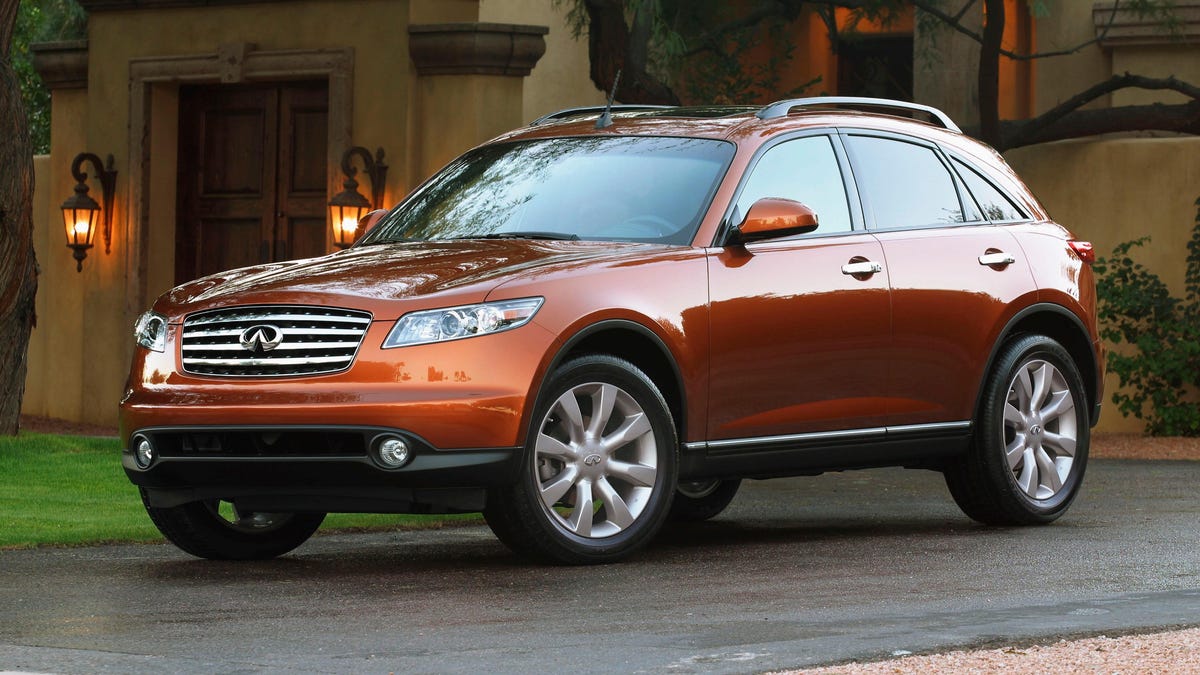The performance SUV. The term itself is almost a conundrum; the Sport Utility Vehicle was created as sort of a new age version of the American station wagon, except it’s a vehicle with a higher driving position that can haul and carry more and most importantly, go off-road. But as the years went on and people bought these things in droves, buyers wanted more and more car-like features in them. Eventually, performance SUVs were born. One of the first to do it properly was the Infiniti FX.
Sure there were performance SUVs that came before the FX, the GMC Typhoon and Mercedes-Benz ML 55 AMG come to mind. But those were SUVs with performance bits on them. The FX was different.
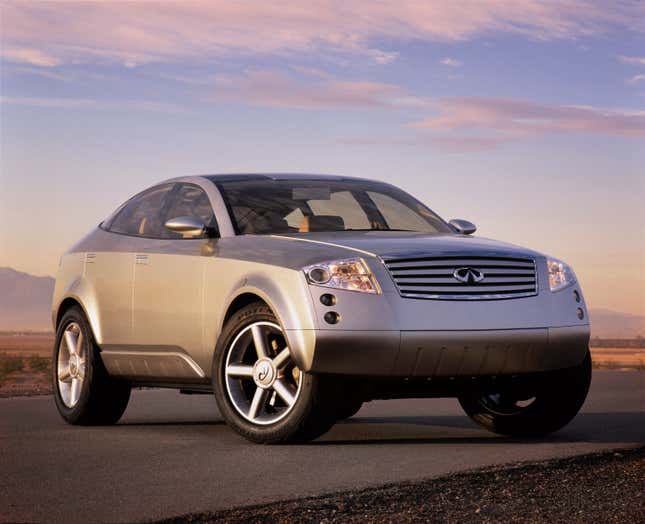
The FX started life as two concepts shown a year apart. The original Infiniti FX45 concept was shown in 2001 and came across as a burley, lifted version of the M45 sedan; its design wouldn’t look out of place today with other crossover coupes like the BMW X6 and Mercedes GLE Coupe. Power came from a 4.5-liter 300-horsepower V8.
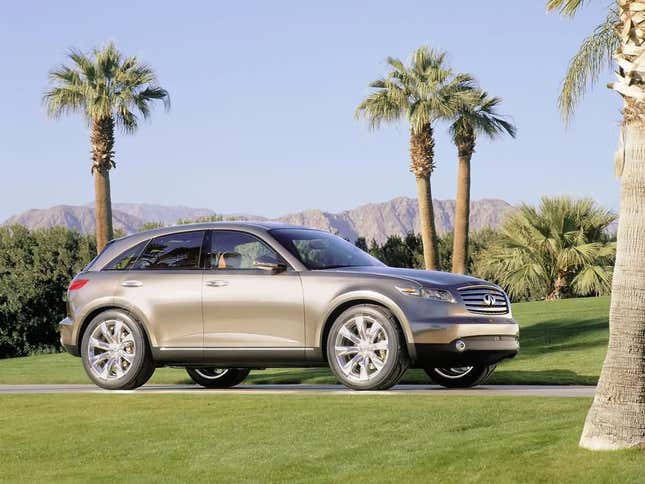
A year later, a near production-ready concept of the FX45 was shown debuting what Infiniti called “bionic cheetah” styling; a long hood and short rear deck/hatch, huge wheels pushed to the corners, and a large front grille with cat-like headlights wowed the automotive world; it went into production for the 2003 model year. Its underpinnings were surprising but welcome for the segment.
The FX rode on Nissan’s FM (Front-Midship) platform, the same platform that underpinned the Nissan Z and Infiniti G sedan and coupe; the R35 Nissan GT-R uses a modified version of the platform. With the engine sitting far ahead but behind the front axle, it had near 50/50 weight distribution (52 front/48 rear). This was impressive for an SUV. Combine that with an aluminum independent rear suspension shared with the G and Z, a tight and rigid structure, and a relatively light curb weight for what it was (An FX45 tipped the scales at 4,497 pounds) and you got an SUV that drove nothing like an SUV. Engine choices made it even better.
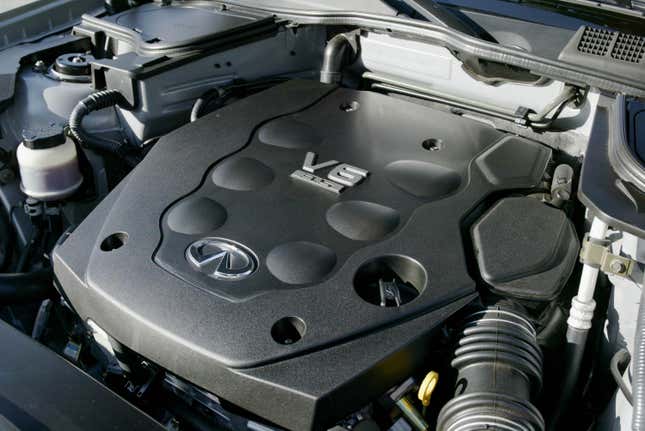
Initially, the FX was available with the 3.5-liter VQ series V6 with 280 hp or the optional 4.5-liter 315 hp V8. The V6 was capable enough. Independent testing showed it was able to hit 60 mph in 7.1 seconds before going on to a 137 mph top speed. It was even able to put down 0.80 gs on a skidpad. Did I mention these things had a great exhaust?
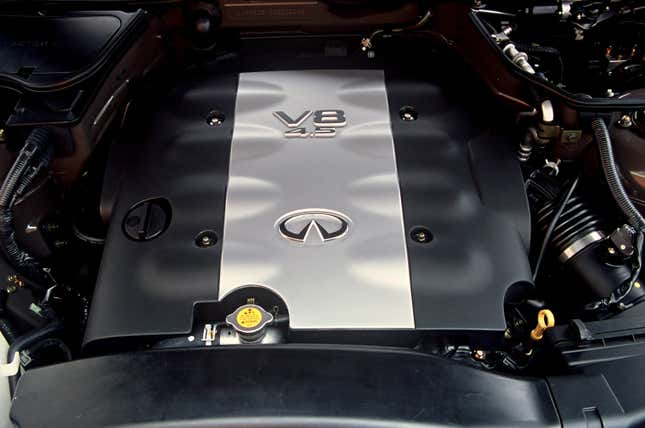
The V8 was the one you wanted though. The FX45 was able to hit 60 mph in just 6.3 seconds, besting both the Mercedes-Benz ML 55 AMG and the BMW X5 4.6is; top speed was 149 mph. With 265/50 Goodyear Eagle RS-A rubber wrapped about 20-inch wheels and an available all-wheel drive system combined to give the FX45 serious grip in corners. Car and Driver said it was “remarkably neutral when you really start pushing its limits.”
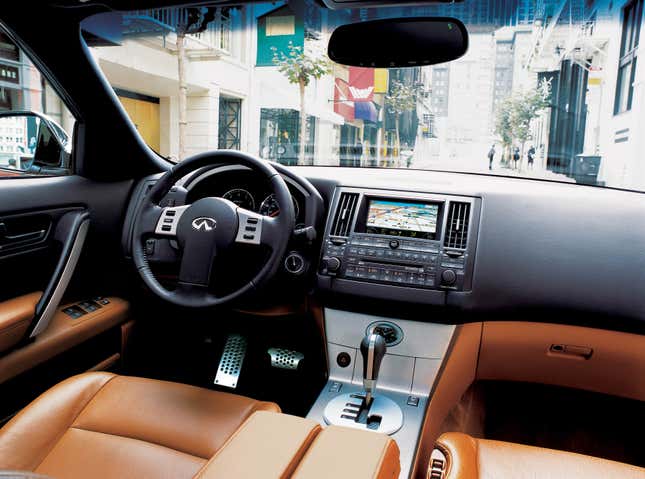
In a four SUV comparison test against the Cadillac SRX V8, BMW X5 4.6is, and Porsche Cayenne S done by MotorTrend, the FX finished second behind the Porsche. Its sports-car/sports sedan-like performance didn’t win over everyone though. Some found the ride a bit too rough and harsh for instance. Pricing was decent. An FX35 started at just $34,745; options could push that price to just under $38,000. The FX45 started at just over $42,000.
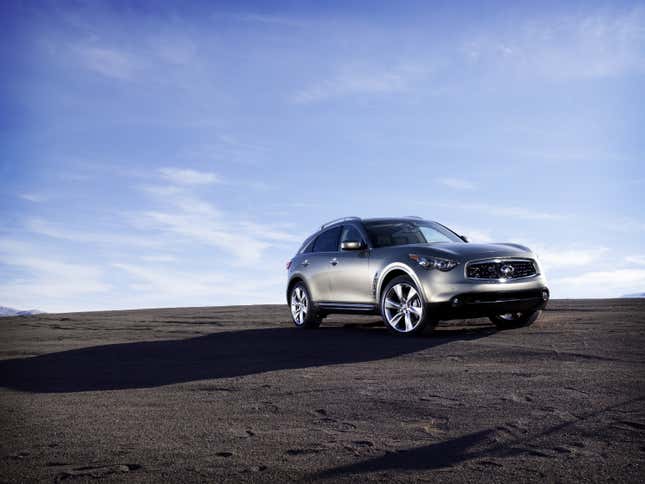
As the years went on, Infiniti fine-tuned the FX. The 2009 model year brought a refresh heavy enough to be dubbed a second generation with changes to the suspension components and increased torsional rigidity. With the updates came two new engines: a 3.7-liter 325 hp V6 and a 5.0-liter 390 hp V8. The changes weren’t welcomed with open arms. Car and Driver called the V6 “coarse and unrefined,” especially since the engine didn’t develop full power until 7,000 RPM. The FX50 was a bit better. Performance improved, but the price went up. And it was thirsty. A 22-gallon fuel tank that needed to be filled with premium and big 21-inch wheels meant you could expect to see just 14 mpg city/20 mpg highway/16 mpg combined.
While the performance was still good for its class, sales were suffering. A name change in 2013 to QX70 didn’t help matters. By 2017, Infiniti made the decision to pull the plug on the FX/QX70 due to low sales. Dealers were moving just a couple hundred a month. Just 6,878 were sold in 2017. In 2020 Infiniti celebrated the 20th anniversary of the FX. It was right to do so. No matter what you think of the FX or the state of the Infiniti brand now, the FX was iconic, in both design and performance. I don’t think anyone will make anything like it again. A performance SUV with sports car bones almost sounds too good to be true.

